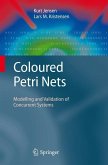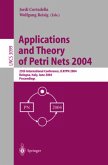Formal methods for the specification and verification of hardware and software systems are becoming more and more important as systems increase in size and complexity. The aim of the book is to illustrate progress in formal methods, based on Petri net formalisms. It contains a collection of examples arising from different fields, such as flexible manufacturing, telecommunication and workflow management systems.
The book covers the main phases in the life cycle of design and implementation of a system, i.e., specification, model checking techniques for verification, analysis of properties, code generation, and execution of models. These techniques and their tool support are discussed in detail including practical issues. Amongst others, fundamental concepts such as composition, abstraction, and reusability of models, model verification, and verification of properties are systematically introduced.
The book covers the main phases in the life cycle of design and implementation of a system, i.e., specification, model checking techniques for verification, analysis of properties, code generation, and execution of models. These techniques and their tool support are discussed in detail including practical issues. Amongst others, fundamental concepts such as composition, abstraction, and reusability of models, model verification, and verification of properties are systematically introduced.
From the reviews: "This is an extensive work providing an overview of the current state of the art of the use of Petri nets in systems engineering. ... The book has been carefully written avoiding an excess of formulas and technicalities. ... This book is suited for those well acquainted with formal modelling of systems and who now want to learn which techniques are available from the perspective of Petri nets." (J.F. Groote, Zentralblatt MATH, Vol. 1024, 2003)








